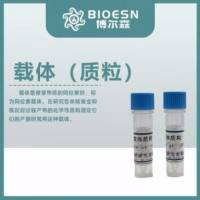Keratin Transgenic and Knockout Mice: Functional Analysis and Validation of Disease-Causing Mutations
互联网
348
Summary The intermediate filament (IF) cytoskeleton of mammalian epithelia is generated from pairs of type I and type II keratins
that are encoded by two large gene families, made up of 54 genes in humans and the mouse. These genes are expressed in a spatiotemporal
and tissue-specific manner from the blastocyst stage onward. Since the discovery of keratin mutations leading to epidermolysis
bullosa simplex, mutations in at least 18 keratin genes have been identified that result in keratinopathies of the epidermis
and its appendages. Recently, noncanonical mutations in simple epithelial keratins were associated with pancreatic, liver,
and intestinal disorders, demonstrating that keratins protect epithelia against mechanical and other forms of stress. In recent
years, animal models provided novel insight and significantly improved understanding of IF function in tissue homeostasis
and its role in disease. Pathological phenotypes detected in mutant mice generated so far range from embryonic lethality to
tissue fragility to subtlety, which often depends on their genetic background. This range implies at least a partial influence
of yet unidentified modifier genes on the phenotype after the ablation of the respective keratin. To date, nearly all available
keratin mouse models were generated by taking advantage of conventional gene-targeting strategies. To reveal their cell type-specific
functions and the mechanisms by which mutations lead to disease, it will be necessary to use conditional gene-targeting strategies
and the introduction of point-mutated gene copies. Furthermore, conditional strategies offer the possibility to overcome embryonic
or neonatal lethality in some of the keratin-deficient mice.









